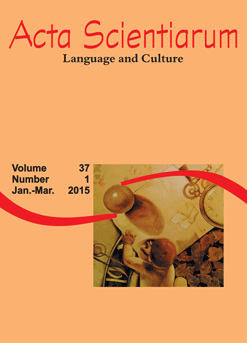<b>Dalit women life-narratives and literature as experience
Abstract
Jacques Ranciere (2011, p. 53) observes that rather than create works of art, contemporary artists want to get out of the museum “[...] and induce alterations in the space of everyday life, generating new forms of relations”. In this context, the aim of this paper is to discuss the power of literature to turn experience into life-narratives that will eventually give rise to a differentiated kind of social experience (SMITH; WATSON, 2010), through the reading of the novel Sangati (1994) by the Indian Dalit writer Bama. In order to make visible the experiences of the Dalit women, Bama rewrites the genre autobiography, as understood in the West, since in her narrative the voice of the community imposes itself upon the voice of the individual. In so doing, she changes the quality and style of canonical narratives considered as literary so that they will accommodate the stories of silenced people articulated through a differentiated kind of aesthetics.
Downloads
DECLARATION OF ORIGINALITY AND COPYRIGHTS
I Declare that current article is original and has not been submitted for publication, in part or in whole, to any other national or international journal.
The copyrights belong exclusively to the authors. Published content is licensed under Creative Commons Attribution 4.0 (CC BY 4.0) guidelines, which allows sharing (copy and distribution of the material in any medium or format) and adaptation (remix, transform, and build upon the material) for any purpose, even commercially, under the terms of attribution.
Read this link for further information on how to use CC BY 4.0 properly.




















6.png)









